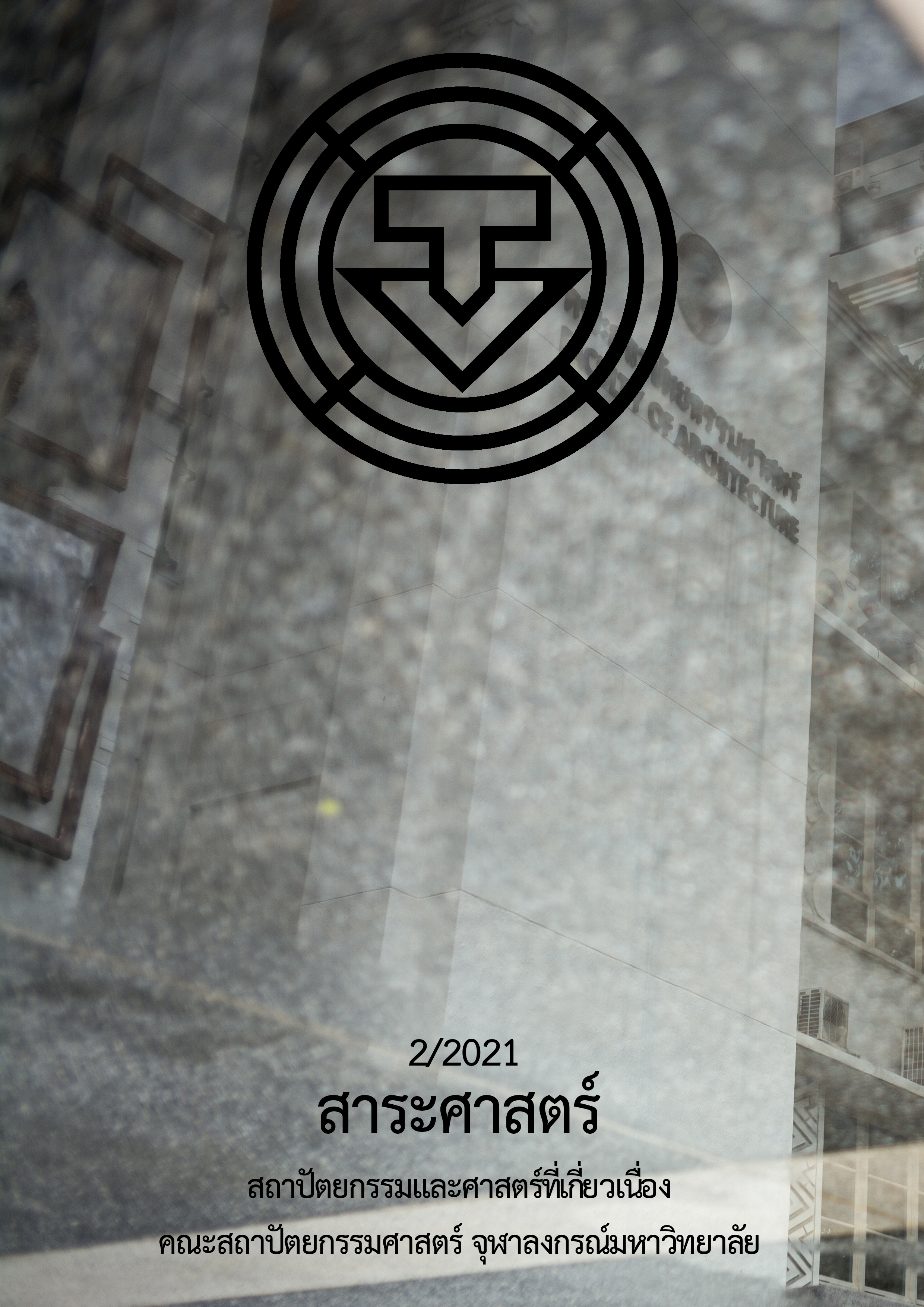Design Guidelines of Physical Environmental for Elderly in Religious Place (Buddhist) the Northeast Region of Thailand Case Study: Watsaket Temple in Baannamkhom, Suwannaphum,Roi Et.
Main Article Content
Abstract
The design guidelines of physical environmental for elderly in religious place (Buddhist) the Northeast Region of Thailand case study: Wat Sa Ket Temple in Baan Namkhom, Suwannaphum, Roi Et aims to suggest appropriate physical environment and facilities for elders as a designing guideline. This guideline uses for religious places (temples) in northeast region. The results based on the research can be adapted appropriately to each context of the temples in the northeastern region. The scope of research area is Wat Sa Ket, Nam Kham Sub-district, Suvarnabhumi District. Roi Et.
The research conducted a study of elderly behavior who are Buddhists to understand the problems and obstacles on the usage area of the temple. After that, all analyzed data are provided a design recommendation in terms of physical environments. It must be suitable and safe, however the context of religious places, culture, traditions and beliefs should be involved as a norm context.
The study results indicated that a religious area (temples) in rural communities in the northeast is not given a physical environment for the elderly and people. Therefore, it is necessary to propose suggestions on the physical environment design in the temple such as the activity area, green areas and recreation areas, selecting materials for flooring pavement to protect a non-slip. If the floor has different levels, there should be a ramp up path for all ages. The circulation in temple should be clearly separated vehicles and pedestrian for safety. For the restroom in the temple, providing a handrail to support the sink and toilet bowl is absolutely necessary. Other facilities and equipment such as signage, resting pavilions, trash cans, etc. should take into account the material, pattern, color scheme that is in harmony with the context of religious places (temples) to be appropriate design. These design guideline are able to apply into the religious context (temples) of each community in the northeastern properly.
Article Details
References
กระทรวงมหาดไทย. กฎกระทรวง กำหนดสิ่งอำนวยความสะดวกในอาคาร สำหรับผู้พิการหรือทุพพลภาพ และคนชรา พ.ศ. 2548. (2548, 2 กรกฎาคม). ราชกิจจานุเบกษา. เล่ม 122 ตอนที่ 52ก หน้า 4-19.
ชมพูนุท พรหมภักดิ์. (2556, สิงหาคม). บทความวิชาการ “การเข้าสู่สังคมผู้สูงอายุของประเทศไทย (Aging society in Thailand). การแรงงานและสิทธิมนุษยชน, 3(16), 1-17.
ชุมเขต แสวงเจริญ, ดรรชนี เอมพันธุ์ และ กำธร กุลชล. (2552). แนวทางการออกแบบสิ่งอำนวยความสะดวกเพื่อคนทั้งมวลในอุทยานแห่งชาติ. วารสารสิ่งแวดล้อมสรรค์สร้างวินิจฉัย คณะสถาปัตยกรรมศาสตร์ มหาวิทยาลัยขอนแก่น, 16(2), 95-117.
ทอง ทุมพร. (2562, 2 มิถุนายน). สัมภาษณ์.
ทัศนีย์ ทีน้ำคำ. (2562, 2 มิถุนายน). สัมภาษณ์.
พระครูประทีป พัฒนะคุณ. (2562, 2 มิถุนายน). สัมภาษณ์.
พุทธะ. (2561). การใช้พื้นที่ของวัด. สืบค้นเมื่อ 23 เมษายน 2561, จาก https://www.phuttha.com/ศาสนสถาน/วัด/การใช้พื้นที่ของวัด
ภารดร ธัญญาพันธุ์. (2539). มาตรฐาน (แนะนำ) การออกแบบบาทวิถีและเฟอร์นิเจอร์ เพื่อส่งเสริมคุณภาพอาคารและสิ่งแวดล้อมสำหรับคนพิการและประชาชนทั่วไป. กรุงเทพมหานคร: กองออกแบบสำนักการโยธา.
ศึก วิชัย. (2562, 2 มิถุนายน). สัมภาษณ์.
สาคร โพธิ์น้ำเที่ยง. (2562, 2 มิถุนายน). สัมภาษณ์.
สำนักส่งเสริมและพิทักษ์ผู้สูงอายุ. [ม.ป.ป.]. คู่มือการจัดสภาพแวดล้อมที่เหมาะสมและปลอดภัยสำหรับผู้สูงอายุ. สืบค้นเมื่อ 15 ธันวาคม 2561, จาก www.oppo.opp.go.th%2Finfo%2F Manual_Older Env-300653.pdf
สำลี รักสุทธี. (2549). ฮีตสิบสองคลองสิบสี่. กรุงเทพมหานคร: พ.ศ.พัฒนาจำกัด.
สุภณ สมจิตศรีปัญญา. (2536). ฮีตสิบสอง คองสิบสี่ จากต้นฉบับใบลาน. ใน เอกสารประกอบการสัมมนาทางวิชาการไทยคดีวิชาการ. (น.42-43). กาฬสินธุ์: ประสานการพิมพ์.
รศรินทร์ เกรย์, อุมาภรณ์ ภัทรวาณิชย์, เฉลิมพล แจ่มจันทร์ และ เรวดี สุวรรณนพเก้า. (2536). มโนทัศน์ใหม่ของนิยามผู้สูงอายุ: มุมมองเชิงจิตวิทยาสังคมและสุขภาพ. กรุงเทพฯ: สถาบันวิจัยประชากรและสังคม มหาวิทยาลัยมหิดล.
อภิศักดิ์ โสมอินทร์. (2537). โลกทัศน์อีสาน (พิมพ์ครั้งที่2). [ม.ป.พ.].


